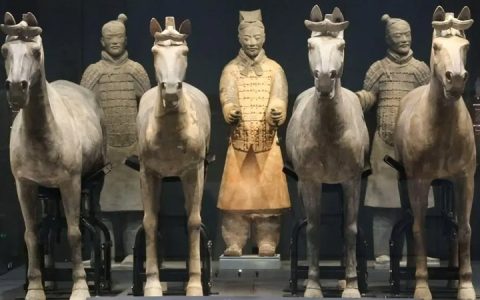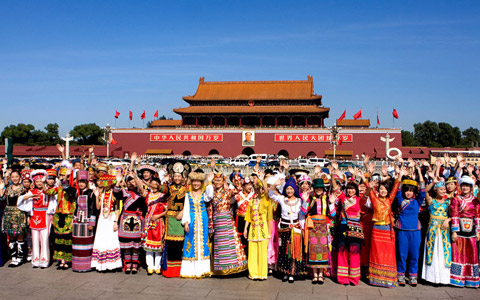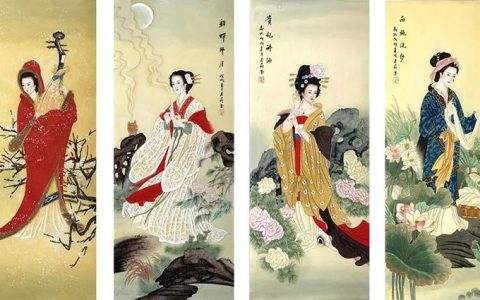The national flag of the People’s Republic of China, commonly known as the “Five-Star Red Flag,” is not just a piece of cloth—it is a powerful symbol of the country’s history, unity, and aspirations. Every element of the flag carries deep meaning, reflecting China’s past struggles and its vision for the future.

1. Design and Symbolism of the Five-Star Red Flag
The flag features a bright red background with five yellow stars in the upper left corner—one large star and four smaller ones arranged in an arc around it. Each color and shape has a specific symbolic role:
Red Background(红色底色):
The red color represents the blood shed by revolutionary martyrs during China’s struggle for national independence and people’s liberation in the 20th century. It also symbolizes the enthusiasm, vitality, and revolutionary spirit of the Chinese people.
The Large Yellow Star(黄色大星):
The large star, with a hammer and sickle pattern embedded in its center (a detail often simplified in common displays), stands for the Communist Party of China (CPC). It symbolizes the CPC’s leadership in uniting the Chinese people and guiding the country toward progress.
The Four Small Yellow Stars(四颗黄色小星):
The four smaller stars represent the four major social classes in China during the revolutionary era: the working class, the peasant class, the urban petty bourgeoisie, and the national bourgeoisie. Their arc arrangement around the large star symbolizes the unity of all Chinese people under the leadership of the CPC.
Yellow Color of the Stars(五角星的黄色):
Yellow is a color traditionally associated with nobility and prosperity in Chinese culture. On the flag, it contrasts sharply with the red background, making the stars stand out—symbolizing the light of hope and the bright future of the Chinese nation.
2. The History of the Five-Star Red Flag
The Five-Star Red Flag was officially adopted as China’s national flag on September 27, 1949, at the First Plenary Session of the Chinese People’s Political Consultative Conference (CPPCC)—just days before the founding of the People’s Republic of China on October 1, 1949.
The design of the flag was created by Zeng Liansong, a clerk from Zhejiang Province. His entry was selected from over 3,000 submissions in a national flag design competition. Originally, Zeng’s design included a horizontal bar across the top of the red background, representing the Yangtze River. However, after discussions, the committee decided to remove the bar to simplify the design and emphasize national unity rather than regional symbols.
Since its adoption, the Five-Star Red Flag has become an iconic symbol of China. It is raised at important national events (such as the National Day celebration on October 1), in front of government buildings, schools, and border posts, and even in space—when Chinese astronauts conduct missions, the flag is displayed to represent the country’s achievements in space exploration.
3. Rules and Etiquette for Displaying the Flag
To respect the national flag, China has strict regulations on how it should be displayed and used. These rules ensure that the flag is treated with dignity:
Where to Display(悬挂场所):
The flag must be raised daily in front of the Tiananmen Rostrum in Beijing, the Standing Committee of the National People’s Congress, the State Council, and other key government institutions. It is also displayed at airports, ports, and border crossings to represent national sovereignty. Schools usually raise the flag weekly during morning assemblies to cultivate patriotism among students.
How to Display(悬挂方式):
The flag must be raised vertically, with the large star in the upper left corner. It should never be hung upside down, sideways, or damaged (e.g., torn, faded). When displayed with other flags (such as in international events), the Chinese national flag must be placed in a prominent position—either higher than other national flags (on the same horizontal line) or in the center of a row of flags.
Respectful Behavior(礼仪规范):
When the national anthem is played and the flag is being raised (e.g., at a sports event or school assembly), all people present should stand at attention, remove their hats (if wearing one), and look at the flag with respect. Children and students often put their right hands over their hearts to show their love for the country.
4. The Flag as a Symbol of National Identity
For the Chinese people, the Five-Star Red Flag is more than a national symbol—it is a source of pride and unity. It represents the country’s journey from poverty and weakness in the early 20th century to becoming a modern, powerful nation that plays an important role in global affairs.
During times of difficulty (such as natural disasters), the sight of the Five-Star Red Flag often brings comfort and strength to the Chinese people. For example, after earthquakes or floods, rescue teams and relief workers often display the flag at disaster sites, symbolizing the government’s support and the nation’s solidarity in overcoming hardships.
On the international stage, the Five-Star Red Flag represents China’s commitment to peace, development, and cooperation. Whether at the United Nations, international sports competitions, or global conferences, the flag stands for China’s efforts to contribute to a better world.






